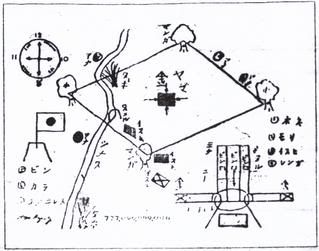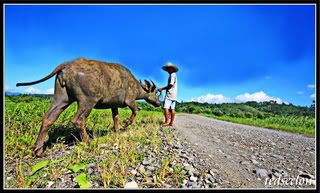
It was raining lightly when the Japanese picked up Frankie that Friday afternoon at the Quedancor office in Butuan City. The power window on the passenger side of the red Nissan vanette went down and revealed a man with a scar. He alit, smiled at Frankie, and motioned for him to join them.
A thin man, about 30, sat on the driver’s seat. At the back, the two Japanese that Frankie met days before, stopped talking when they saw him. Right away he noticed that the man in the middle, wearing a lime green shirt, was holding a plastic tube the size of a big Youngstown can, its round tip almost touching the small face of the other man in an orange shirt.
He boarded and sat by the window, beside Green. As the door slid close, he felt a stirring excitement inside him.
***
Frankie hoped that his wife Nening had prepared the room for the Japanese to sleep in as the red vanette sped through the well-lit street of Tago a few minutes past ten o’clock. Earlier that morning, he sent her text messages and she rained him with questions that he promised to answer once home.
Nening and her two sons stood by the door when Frankie got off the car. He introduced her to them and made them feel comfortable.
"Coffee?" she asked. Green and Orange nodded; it was Scarface who said thank you.
As Nening went to the kitchen, Frankie herded his children to their room. Not much later, Green, Orange and Scarface asked to be excused for the trip had worn them out, adding not to mind the driver because he would be sleeping inside the van.
Frankie went out and joined his neighbors over at the corner, passing around a Nescafe glass half-filled with cola and rhum.
It was past midnight when Frankie went home. Though the house was silent, he knew that beyond the wall, the papel de Japon, as he called them, were still awake.
He joined his wife and promptly fell asleep. Hours later, he woke up to empty his bladder. As he passed by the room of the Japanese, he sensed a kind of hush. Why are they still up? he thought as he went back to sleep.
Minutes after four o’clock, he woke up again to use the toilet. The Japanese were still awake, and this time, he could hear them speak in whisper, like early birds careful not to wake the early worms.
What keeps the Japanese awake? What are they doing? These questions made Frankie a bit curious, making him want to go to the far end of the wall where there was a crack that he could peep into.
But Frankie hesitated. What if he got caught? It would be embarrassing, to say the least. He headed for the toilet.
On his way back, he heard their whispers again, and this time, there was an edge of excitement to them. He went to the far end of the wall.
He felt mice playing ik-ikan inside his chest as he pressed his left eye against the crack on the wall. They were sitting on the floor in true Japanese fashion, and from where Frankie stood, Scarface was facing him, blocked partly by Orange; Green had his back against the bed.
From what Frankie could make, they were looking at something spread on the floor. He couldn’t see what it was, at least not in full, because what he could see was only the tip of what looked like a piece of paper. Then suddenly Scarface lifted the paper whose width was such that when he stretched it between his hands, it was like he was crucified.
The mice ran wild as Frakie stared, transfixed: There, in front of him and held by Scarface, was a copy of an old map!
Then Orange, as if to show Green, put his finger at the center of the map and let it stay there for a while before moving slowly to the spot near the top, to the right.
He looked at Green. And together they smiled.


